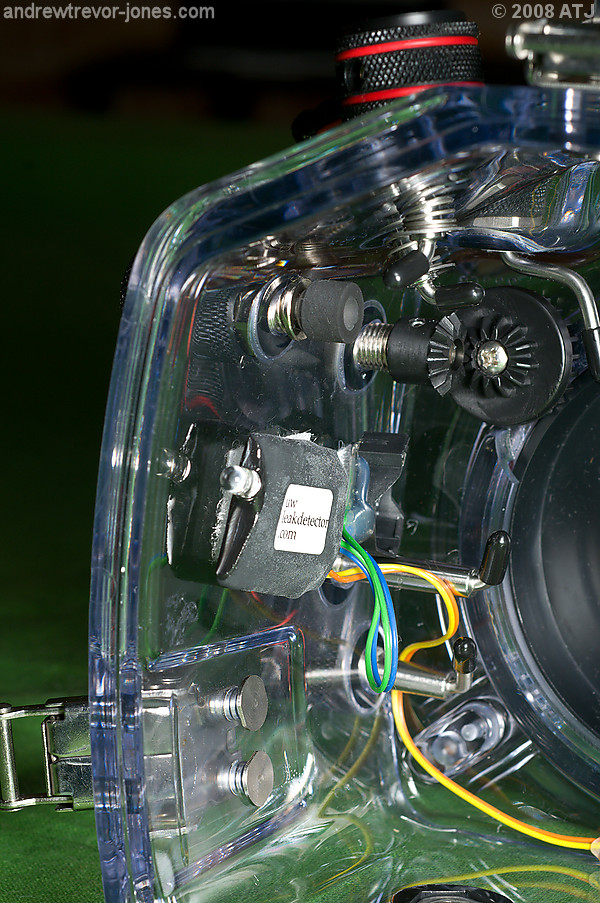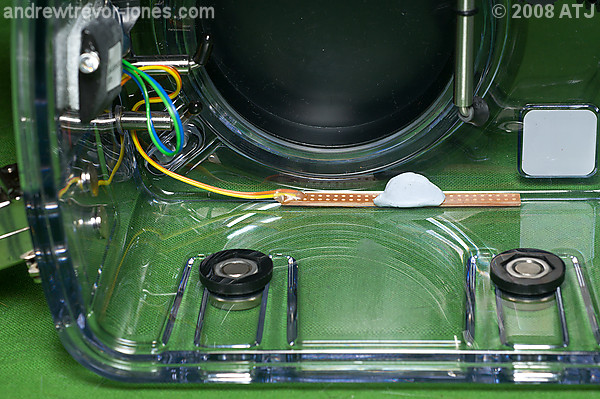
Placement of the main unit of the leak detector in the D300 housing. The battery is mounted towards the front of the housing from the main unit.
Sunday 28 September 2008
I received a Jeff Mullins' Underwater Leak Detector just before I went away on my Undersea trip (only just in time, too) and have not had a chance to write about it. I used it for the 13 dives and one snorkel and I had no problems at all. I guess this is one purchase I hope I never have to find out if it works.
The unit is very simple. There is are two strips of copper on a sort of breadboard arrangement. The two strips are isolated but any water in the housing will conduct electricity between the two strips. The strips are connected to the base unit which has all the circuitry for the detection of the water and a LED that will flash if water is detected. There is also a battery holder in a separate unit but connected to the base unit.
To install the unit, I placed the copper strips at the lowest point in the housing just below the front port opening, secured with some Blu-Tack. The idea is that even a small amount of water in the housing will be enough to cause conductivity between the copper strips causing the LED to flash and warning me of water in the housing. The base unit and battery were secured to the left side of the inside of the housing just above the bulkhead for the strobe. It took me a few attempts to find appropriate places for both components to ensure they cleared the camera and controls. Eventually, I found a spot that works.

Placement of the main unit of the leak detector in the D300 housing. The battery is mounted towards the front of the housing from the main unit.

Placement of the copper strips of the leak detector in the D300 housing. The battery is mounted towards the front of the housing from the main unit.
The unit is fairly easy to test. A wet finger or thumb across the copper strips and the LED begins to flash.
As I mentioned above, I hope I never have to experience whether it works or not.